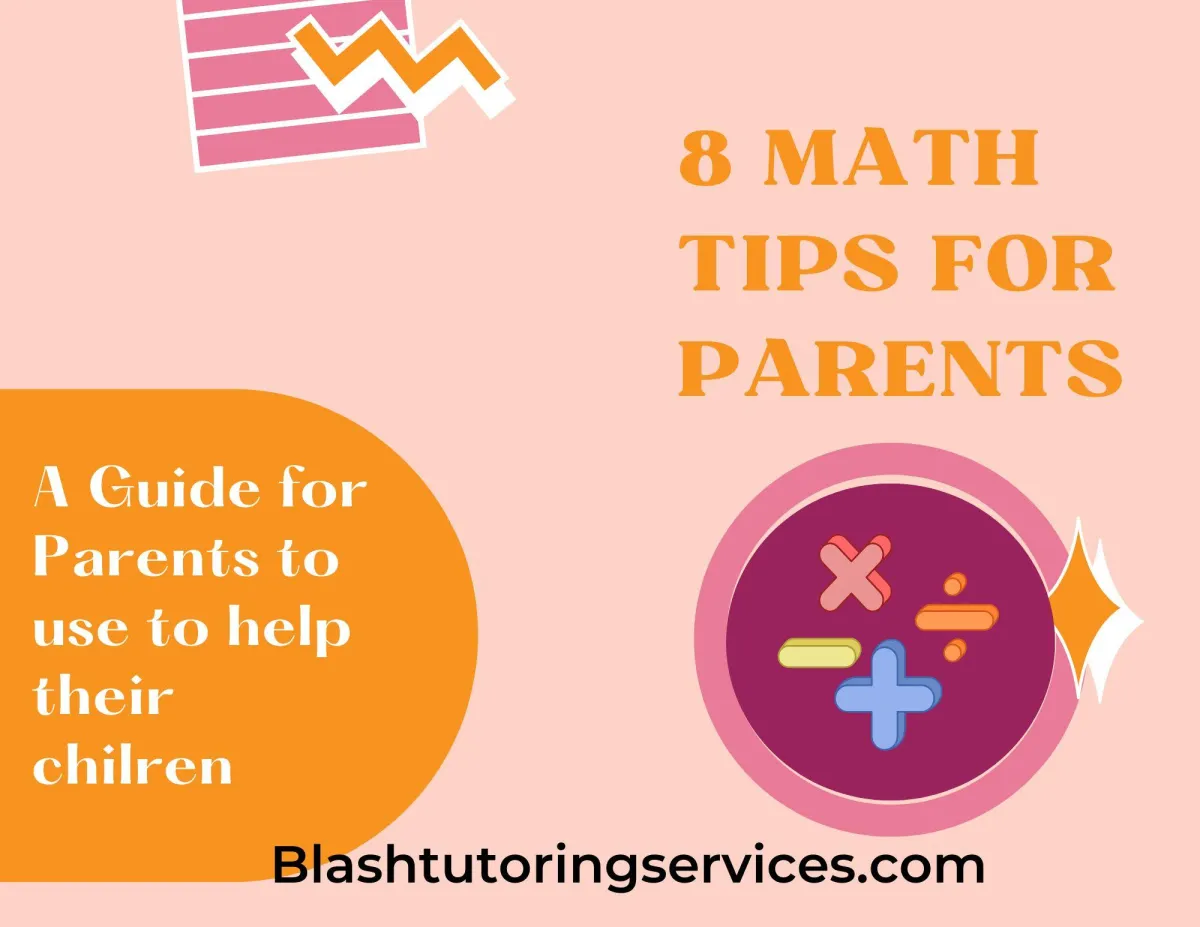
8 Math Tips for Parents: A Guide for Parents
Ah, mathematics! The one subject that can make a six-year-old squeal with excitement (rare, but it happens) or dramatically "fall ill" to escape homework. If you're a parent or teacher trying to help elementary kids embrace numbers without tears (yours or theirs), this guide is for you. Let’s turn math from a “chore” into a “score” with humor, creativity, and a sprinkle of patience.

Who said math has to be done on boring worksheets? Turn math into a game!
Math Bingo: Replace the traditional bingo numbers with math problems. ("I-25" becomes "I-5x5." Instant engagement.)
Card Games: A simple deck of cards can transform into addition, subtraction, or multiplication wars. For example, flip two cards, and the fastest one to shout out their sum wins. Bonus: It’s a stealthy way to practice mental math! There are many card games to choose from.
Life-Sized Board Games: Use your living room floor or classroom to create a math-themed obstacle course. Each station has a math challenge. Kids love movement, and adding physical activity to math makes it doubly effective.
Rebounder: Have your child bounce on a rebounder (mini-trampoline) while they are practicing multiplication tables, addition and subtraction facts.
2. Turn Your Kitchen Into a Math Lab

The kitchen isn’t just for whipping up pancakes; it’s also a math goldmine. Teach fractions while baking (“If we’re doubling the recipe, how much sugar do we need?”). Discuss units of measurement while filling cups or converting ounces to milliliters. And don’t forget estimation games like “How many jellybeans can fit in this jar?” Spoiler: No one can resist guessing.
This is a great way for students to see the connection between math and some very practical skills such as cooking. You can stretch this into the garden as well. Have your child pour a certain number of cups of soil into pots and ask how many cups of soil total do we have.
3. Math + Storytelling = Magic
Kids love stories, so why not embed math into them? Instead of "John had 3 apples and gave away 2," say, "Superhero Sally had 3 magic apples. She gifted 2 to save the galaxy. How many did she have left to fight the Evil Carrot King?" Suddenly, subtraction is exciting.
You can even create math problems based on your child’s interests. Dinosaurs, astronauts, unicorns, or even ninja cats—tailor the story, and watch their eyes light up.
4. Get Techy
Let’s face it: Kids adore screens. Use that to your advantage with educational apps and games that make math fun. Platforms like Prodigy, Khan Academy Kids, and SplashLearn are packed with interactive activities that feel more like play than work. Just set a time limit unless you want “math time” to become “all day screen time.” This is one of those online supports that are easily accessible.
5. Incorporate Math Into Everyday Life
Make math a natural part of daily conversations. For example:
While shopping: “If apples are $1.50 per pound, how much will 3 pounds cost?”
During car rides: “We’re driving 60 miles an hour, and we have 120 miles to go. How long will it take us?” (Pro tip: Mention a treat at the destination for added motivation.)
Setting the table: “If there are 5 people coming for dinner, and each needs 2 forks (don’t ask), how many forks do we need in total?”
It is always good to encourage conversation with your children. Enjoy those conversations and be creative with your math questions.
6. Celebrate Mistakes
Math can be intimidating, especially when mistakes happen. Create a safe space where kids feel comfortable making errors. Turn incorrect answers into opportunities: “Oops, close! Let’s see how we can solve it together.” Celebrate the process, not just the result.
If you do use a worksheet or are reviewing a past test, have your children give an incorrect answer a second shot. Talk about the thought process that should be happening when attempting the answer.
7. Channel Your Inner Stand-Up Comedian
Math jokes might seem cringe-worthy, but they work wonders for lightening the mood. Try these:
Why was the equal sign so humble? Because it knew it wasn’t less than or greater than anyone else.
Why did the math book look sad? It had too many problems.
Parallel lines have so much in common. It’s a shame they’ll never meet.
Cue the giggles—or at least a groan and a smile.
8. Reward Progress, Not Perfection
Instead of focusing on getting every answer right, celebrate effort and improvement. Create a "math champion" chart, give out silly certificates ("Most Creative Problem Solver"), or simply offer verbal praise. Positive reinforcement goes a long way in building confidence.
Final Thoughts
Math doesn’t have to be a dreaded subject for elementary kids. With a bit of humor, creativity, and real-world application, you can turn it into something they look forward to. Whether you’re a parent navigating fractions at home or a teacher trying to make multiplication memorable, remember: the goal isn’t just to teach math—it’s to spark curiosity and a lifelong love of learning.
Keep in mind that all of these activities can be great supports as you are pursuing online tutoring. The on-line tutor or parent can access card games that are online and can be a great addition to your practice tool kit.
Now, go forth and multiply the fun!

